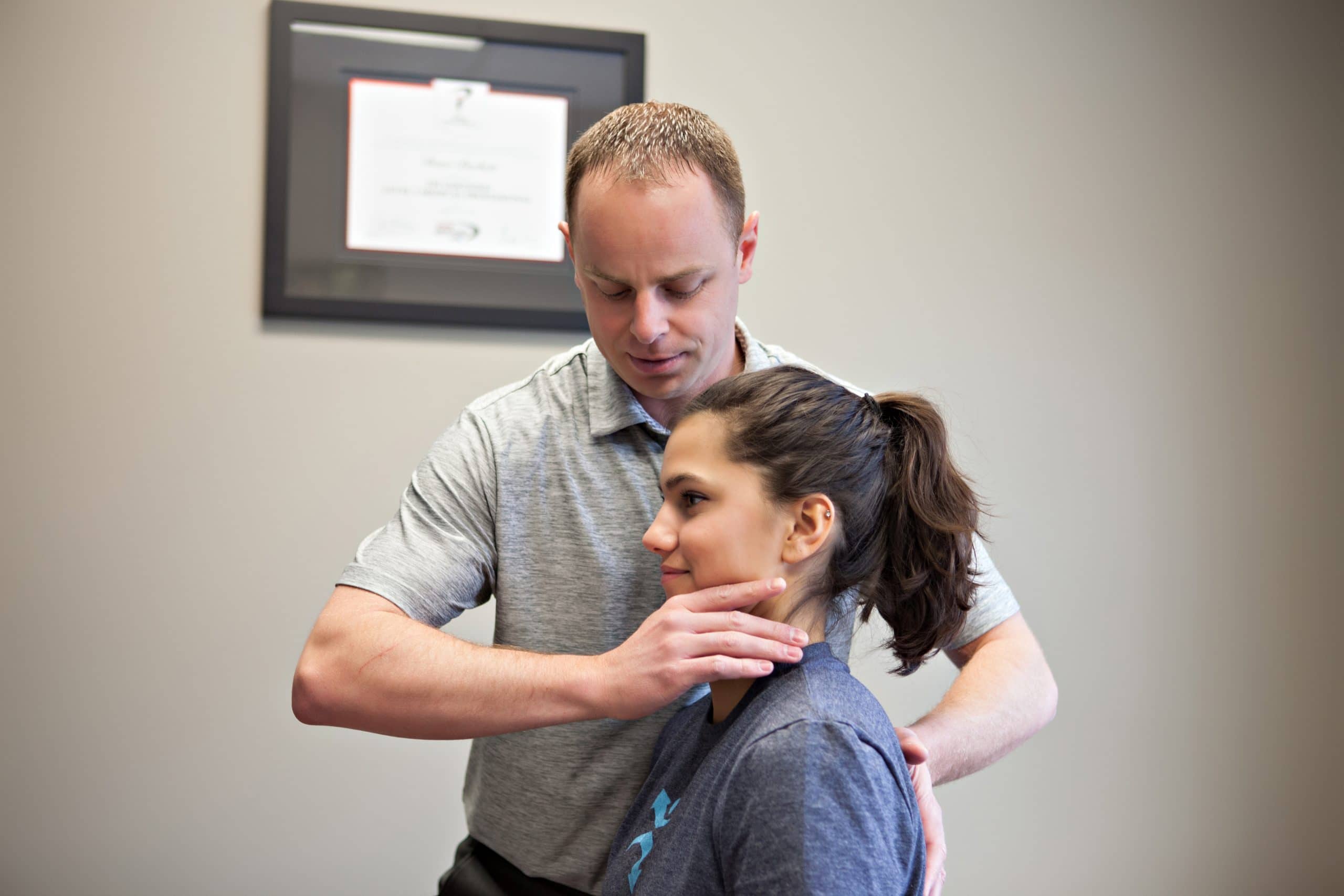Signs of TMD and How to Fix It

Click. Pop. Grind… are these jaw sounds familiar?
Or how about this…
Delicious bagels that used to satisfy the soul, now cause a stabbing pain in your jaw.
Yawning is no longer just an indicator that your tired, but also that something in your jaw is just not right.
Instead of waking up well rested, it feels like your jaw was up all night doing pushups.
These are many of the typical experiences described by patients with TMD (temporomandibular disorder). Symptoms can come daily, or may come and go. Pain is often a common descriptor, but non-pain sounds– like clicking or popping– or difficulty moving your jaw fully, can also be indicators of jaw dysfunction.
The act of eating and talking actually go into much more detail than simply opening and closing your mouth. There are a number of muscles, joints and actions that come into play allowing for our needed movement. TMD is a unique specialty of physical therapy care, as it not only includes addressing muscular weakness problems, but also any joint tightness, movement pattern dysfunctions and a person’s overall posture. How we sit, move, and act every day impacts our bodies. Sometimes these problems can develop slowly over a long period of time, until one day the pain seems to have just “started for no reason.” Physical therapists are great sleuths and will work hard to identify what may have been the originator of your problem. Our goal is to solve the root problem, not just the symptoms.
If you are dealing with TMD problems, here are some immediate steps you can take to start to address you pain.
1.) Diet Changes – There are certain foods that will challenge our jaws more or less. When our ability is already lowered, making temporary changes to your diet can help make your pain more manageable. Here are some examples:
Avoid:
Foods that require large bites (hamburger, apples, baguettes…)
Foods that are tough or stringy (beef jerky, bacon…)
Foods that are hard or cannot be mashed (carrots, broccoli, celery…)
Foods that are gummy or require a lot of chewing to eat (dried fruit, gum, gummy candy…)
Utilize:
Cut food into smaller bites
Increase the amount of soft foods in your diet, such as yogurt, pancakes or smoothies
Slow cook meats to make them more tender
Mash or cook carrots to soften them
2.) Cut Out Bad Habits – Sometimes we do things that aren’t good for us without thinking. Here are some habits to correct if you notice you are doing them:
Avoid:
Chewing on pencils or pen caps
Biting your nails
Slouched sitting
3.) Correct your posture – This is probably one of the quickest and most impactful changes that you can make to improve your TMD problems. By sitting in poor posture, it puts the joint in a position that it will be more easily strained. Making sure your desk set up keeps you sitting up properly will keep you from being predisposed to developing TMD.
TMD is a common problem many people live with. Don’t settle for living with the pain. Come see your physical therapist today!
